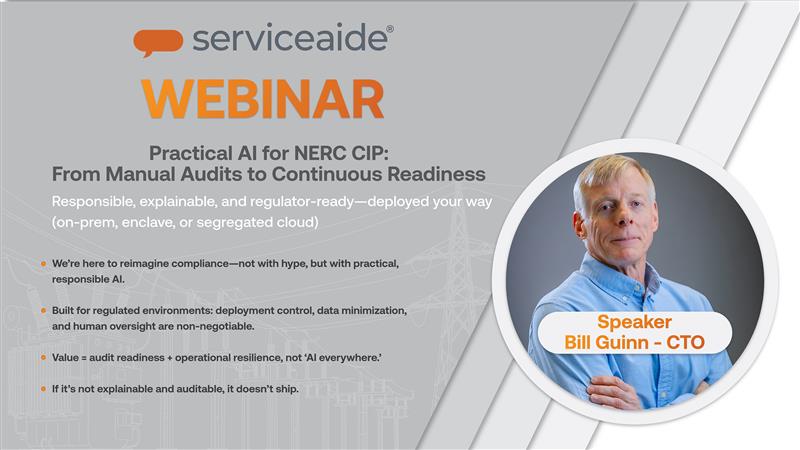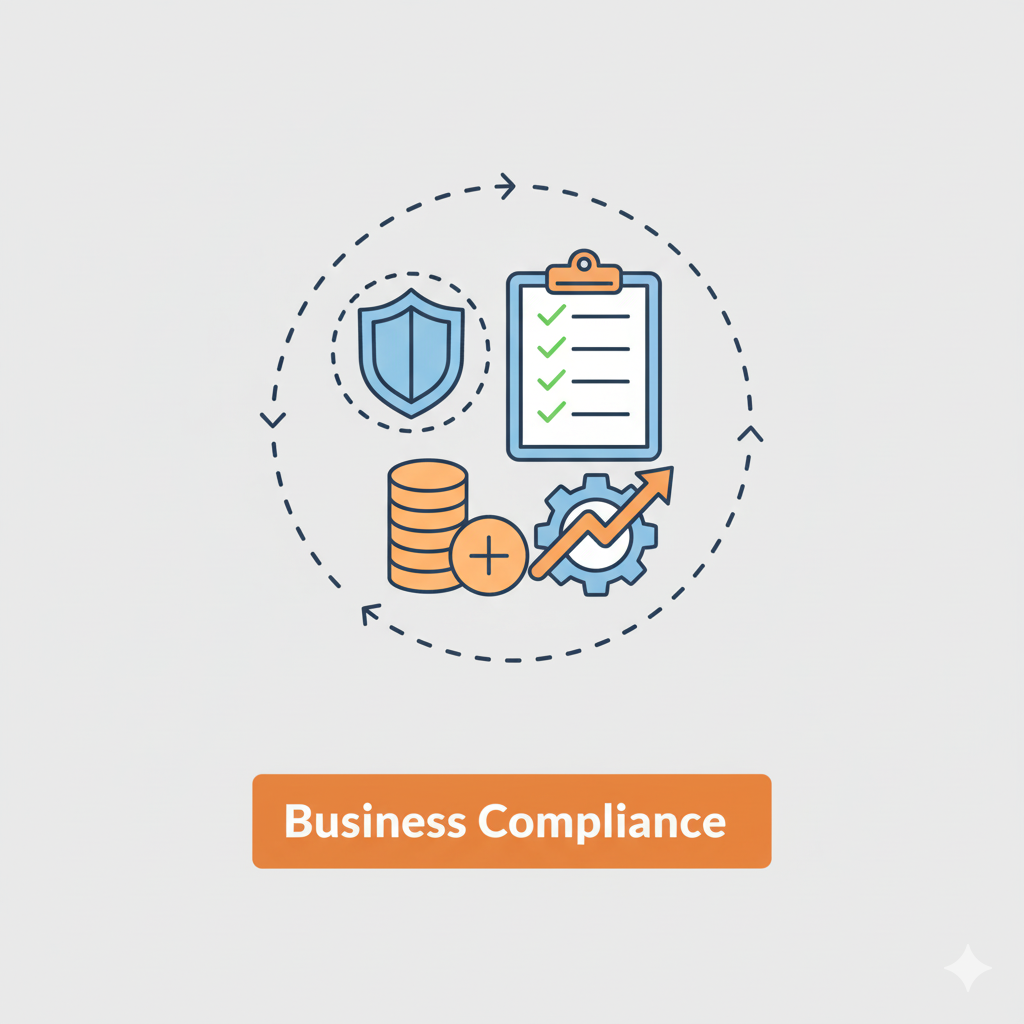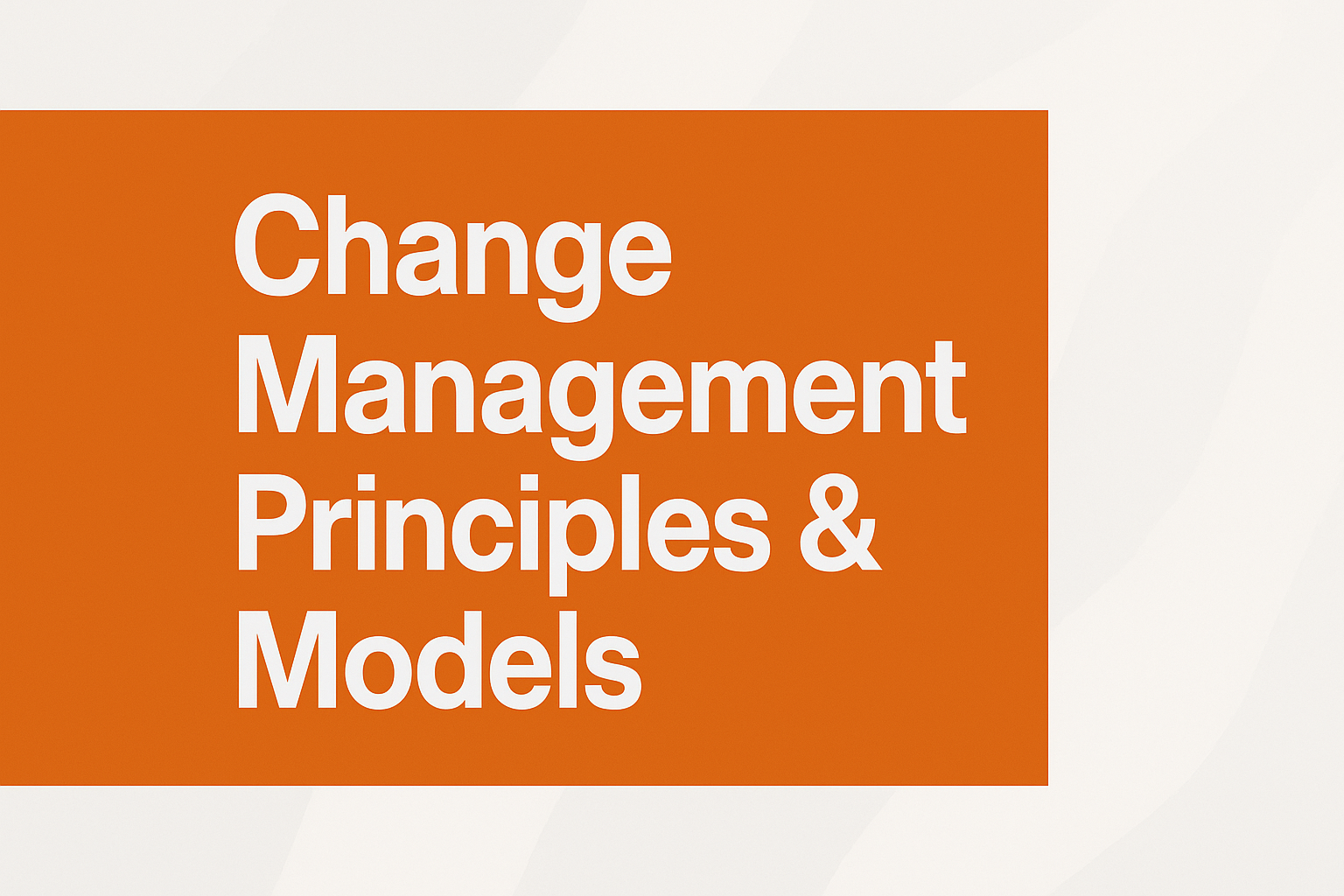Your Essential Guide to ADKAR, Lewin, and 5 Key Frameworks
The Imperative for Change Management in Today's Business Landscape
Change is the only constant in business. Yet, despite its inevitability, organizational transformation is fraught with challenges. Market shifts, technological disruptions, and evolving customer expectations demand that a company adapt or risk obsolescence. The difference between thriving and merely surviving often comes down to one critical discipline: change management. Successfully navigating these transitions requires more than just a good idea; it demands a structured approach, strong leadership, and a deep understanding of the human element involved.
What is Change Management? Navigating the Evolving Business Landscape
Change management is the systematic approach to dealing with the transition or transformation of an organization's goals, processes, or technologies. The purpose is to implement strategies for effecting change, controlling change, and helping people to adapt to change. It's about guiding an organization and its people from a current state to a desired future state while minimizing resistance and disruption. Without a formal process, even the most promising initiatives can fail, leading to wasted capital, decreased morale, and missed opportunities.
Why an Essential Guide? Navigating Complexity for Sustained Success
The complexities of modern business require a robust toolkit. A single, one-size-fits-all approach is no longer sufficient. This guide provides an essential overview of foundational principles and a curated selection of the most effective change management models, including deep dives into Lewin's foundational framework and the people-centric ADKAR model. Understanding these frameworks will equip leaders with the clarity and capabilities needed to steer their company through transformation, ensuring that change is not just managed, but harnessed for growth and competitive advantage.
Core Principles of Effective Change Management: The Foundation of Successful Transformation
Before exploring specific models, it’s crucial to understand the universal principles that underpin any successful change initiative. These tenets form the bedrock upon which frameworks are built and are essential for navigating the journey from vision to reality.
Strong Leadership Commitment and Vision
Effective change starts at the top. Leadership must not only champion the change but also articulate a clear and compelling vision for the future. This vision provides direction, purpose, and a benchmark for success. A committed leadership team actively allocates resources, removes obstacles, and models the desired behaviors. This visible sponsorship builds trust and demonstrates the organization's unwavering commitment, which is a critical condition for securing the necessary capital and maintaining the confidence of lenders and stakeholders by showcasing a stable, forward-thinking company.
Proactive Communication and Transparency
Clarity is the antidote to fear and resistance. A proactive communication strategy is essential for keeping all stakeholders—from employees to customers—informed and engaged. This means communicating early, often, and through multiple channels. The goal is to explain the "why" behind the change, its expected benefits, the timeline, and how it will impact individuals. Transparent communication demystifies the process, manages expectations, and builds a foundation of trust that is vital for navigating uncertainty.
Fostering Employee Engagement and Ownership
Change is ultimately implemented by people. Engaging employees from the outset fosters a sense of ownership and turns potential resistors into advocates. This involves creating opportunities for feedback, participation in planning, and collaboration across departments. When employees feel heard and valued, they are more likely to invest their energy in making the change a success. Ignoring the human side can lead to significant stress; indeed, 73% of change-effected employees report experiencing moderate to high stress levels, highlighting the need for empathetic engagement.
Building Capabilities Through Training and Development Programmes
For change to stick, employees must have the skills and knowledge to operate in the new environment. This requires a strategic investment in training and development to build new capabilities. Whether it's learning new software, adapting to new processes, or developing different interpersonal skills, providing the right support ensures individuals have the capacity to perform their roles effectively. A McKinsey study found that companies using advanced digital tools for training and support are 26% more likely to achieve change management success.
Culture Alignment and Reinforcement
Lasting change must be woven into the fabric of the organization's culture. This means aligning reward systems, performance metrics, and organizational values with the new way of working. Leadership must consistently reinforce the desired behaviors and celebrate early wins to build momentum. When the new behaviors become the "way we do things around here," the change has truly taken root, moving from a temporary project to the new standard operating procedure at its new home base.
Deep Dive 1: Lewin's 3-Step Change Model (Unfreeze-Change-Refreeze)
Developed by social psychologist Kurt Lewin in the 1940s, this model remains one of the most fundamental and influential frameworks for understanding the change process. Its strength lies in its simplicity, providing a clear, high-level roadmap for any type of organizational transformation.
Understanding the Stages: Unfreeze, Change, Refreeze
- Unfreeze: This initial stage is about preparing the organization for change. It involves breaking down the existing status quo and creating the motivation to change. Leaders must challenge current beliefs, values, and behaviors to demonstrate why the existing condition is no longer sustainable. This requires clear communication about the threats of not changing and the vision for a better future.
- Change (or Transition): Once the organization is "unfrozen," the change can be implemented. This is the period of transition where people are learning new behaviors, skills, and processes. It is often a time of uncertainty and confusion, making strong guidance and support critical. Collaboration and continuous feedback are essential to navigate the complexities of this stage effectively.
- Refreeze: The final stage is about stabilizing the organization after the change has been made. The new ways of working are embedded into the culture, policies, and procedures to ensure they become the new standard. Reinforcement, recognition, and ongoing support help prevent a regression to old habits.
Practical Application and Best Practices
Lewin's model is best applied to initiatives where the end state is clearly defined. For instance, when implementing a new enterprise resource planning (ERP) system, leaders first "unfreeze" by explaining the inefficiencies of the old system. The "change" phase involves training and system rollout. Finally, they "refreeze" by making the new ERP the official system of record and updating all relevant job descriptions and performance metrics.
Strengths and Considerations
The model's primary strength is its simplicity and intuitive logic, making it easy to communicate and understand. However, its linear nature can be a limitation in today's dynamic environment, where change is often continuous rather than a discrete event. Critics also note that it can be seen as overly top-down, potentially underemphasizing individual employee feedback and engagement during the "Unfreeze" phase.
Deep Dive 2: The Prosci ADKAR Model for Individual Change
While Lewin's model provides an organizational view, the Prosci ADKAR Model focuses on the individual journey through change. It recognizes that organizational change is the cumulative result of many individuals changing their behaviors. The model provides a goal-oriented framework for managing the human side of transformation.
Deconstructing ADKAR: Awareness, Desire, Knowledge, Ability, Reinforcement
ADKAR is an acronym for the five outcomes an individual must achieve for change to be successful:
- Awareness: Understanding the "why" behind the change.
- Desire: The personal motivation and willingness to support and participate in the change.
- Knowledge: Knowing "how" to change, which includes understanding the required skills and processes.
- Ability: The demonstrated capability to implement the change and perform in the new way.
- Reinforcement: The actions and systems that make the change stick, such as recognition, rewards, and feedback.
Leveraging ADKAR for Individual Transition Success
ADKAR acts as a powerful diagnostic tool. By assessing where individuals or groups are in the process, leaders can identify barriers and provide targeted support. For example, if employees have Awareness but lack Desire, the issue isn't a lack of communication but a need to address personal motivations and what's in it for them. This focus on individual success is highly effective, as organizations that excel at change management often see a significant return; the change management ROI can range from 3:1 to 7:1.
Integrating ADKAR with Organizational Strategies
ADKAR complements broader project management methodologies like Lewin's model. While a project plan outlines the technical steps, ADKAR provides the people-focused roadmap. For instance, during Lewin's "Change" phase, leaders can use ADKAR to ensure employees are gaining the Knowledge and developing the Ability needed for the transition. This integration ensures that both the technical and human aspects of the change are managed in parallel.
Expanding Your Toolkit: 5 Additional Key Change Management Frameworks
Beyond Lewin and ADKAR, several other models offer unique perspectives and tools to manage the complexities of change.
Kotter's 8-Step Change Model: Driving Large-Scale Transformation
Developed by Dr. John Kotter, this model provides a detailed, step-by-step process for leading large-scale organizational change. It emphasizes creating a sense of urgency, building a powerful guiding coalition, and anchoring new approaches in the culture. It is a process-oriented framework that provides a clear roadmap for leadership.
McKinsey 7S Framework: Aligning Organizational Elements for Change
This model serves as a diagnostic tool to assess organizational health and alignment. It posits that seven internal elements—Strategy, Structure, Systems, Shared Values, Style, Staff, and Skills—are interconnected and must be aligned for an organization to be successful. During a change, this framework helps identify which elements will be impacted and what needs to be adjusted to maintain coherence.
Bridges' Transition Model: Managing the Human Side of Change
Similar to ADKAR, William Bridges' model focuses on the psychological transition people go through during change. It distinguishes between "change" (the external event) and "transition" (the internal process). It outlines three stages: Ending, Losing, and Letting Go; The Neutral Zone; and The New Beginning. This helps leaders empathize with and guide employees through the emotional journey.
Kübler-Ross Change Curve: Understanding Emotional Responses to Change
Originally developed to describe the stages of grief, this model has been adapted to map the emotional responses employees often experience during organizational change: Denial, Anger, Bargaining, Depression, and Acceptance. Understanding this curve allows leaders to anticipate reactions and provide appropriate support at each stage.
Satir Change Model: Embracing Performance and Integration
This model describes how a system or group responds to change, mapping the impact on performance over time. It includes stages like Late Status Quo, Resistance, Chaos, Integration, and New Status Quo. It’s particularly useful for predicting dips in productivity and planning interventions to move teams through the "Chaos" phase more quickly.
The Synergistic Approach: Combining Models for Robust Change Initiatives
No single model is a silver bullet. The most effective change leaders build a flexible approach by combining elements from different frameworks to suit their specific context.
Why a Multi-Model Strategy is Essential for Complex Change
Modern organizational changes are rarely simple or linear. They involve multiple systems, diverse groups of stakeholders, and unpredictable external factors. A multi-model strategy allows leaders to address both the high-level process (Lewin, Kotter) and the individual, human experience (ADKAR, Bridges) simultaneously, providing a more holistic and resilient approach.
How ADKAR and Lewin Complement Each Other
Lewin's model provides the "what" and "when" of change at an organizational level, while ADKAR addresses the "who" and "how" for each individual. You can use Lewin's "Unfreeze" stage to create ADKAR's Awareness and Desire. During the "Change" stage, you focus on building Knowledge and Ability. Finally, the "Refreeze" stage is about creating systems for Reinforcement.
Integrating Diagnostic (McKinsey 7S) and Process (Kotter) Models
Before launching a large-scale change using Kotter's 8 steps, a leader can use the McKinsey 7S model to diagnose the organization's current state. This analysis helps identify potential areas of misalignment or resistance, allowing the change plan to be tailored to the company's specific needs, ensuring all seven elements are considered in the transformation.
Using Human-Centric Models (Bridges, Kübler-Ross, Satir) to Support Implementation
During any change process, these models provide a crucial lens for understanding and supporting employees. When a team's performance dips (as predicted by the Satir model), leaders can recognize they might be in the "Chaos" phase. By understanding the Kübler-Ross curve, they can anticipate emotional responses and use Bridges' Transition Model to guide employees toward a "New Beginning" with empathy and targeted support.
Implementing Change: Practical Roadmaps, Overcoming Challenges, and Measuring Success
Successfully managing change is a strategic imperative that delivers tangible results. Organizations with strong change management are not only more agile but also financially healthier. In fact, one report indicates they experience 264% greater revenue growth than their less effective counterparts. This level of success improves a company's financial condition, bolstering its credit history and creditworthiness in the eyes of lenders.
To achieve this, leaders must move from theory to action. This involves creating a clear roadmap that integrates the chosen models, establishes clear roles and responsibilities, and defines key performance indicators (KPIs). Challenges like resistance, lack of resources, and competing priorities are inevitable. Overcoming them requires persistent leadership, transparent communication, and a willingness to adapt the plan based on feedback. Success is measured not just by project completion but by adoption rates, employee satisfaction, performance improvements, and ultimately, the achievement of the strategic business objectives that prompted the change in the first place. This holistic approach ensures that transformation delivers lasting value and builds the organization's capacity for future changes.
Latest Insight

Practical AI for NERC CIP Compliance

Is Your Knowledge Ready for AI










.svg)
.svg)